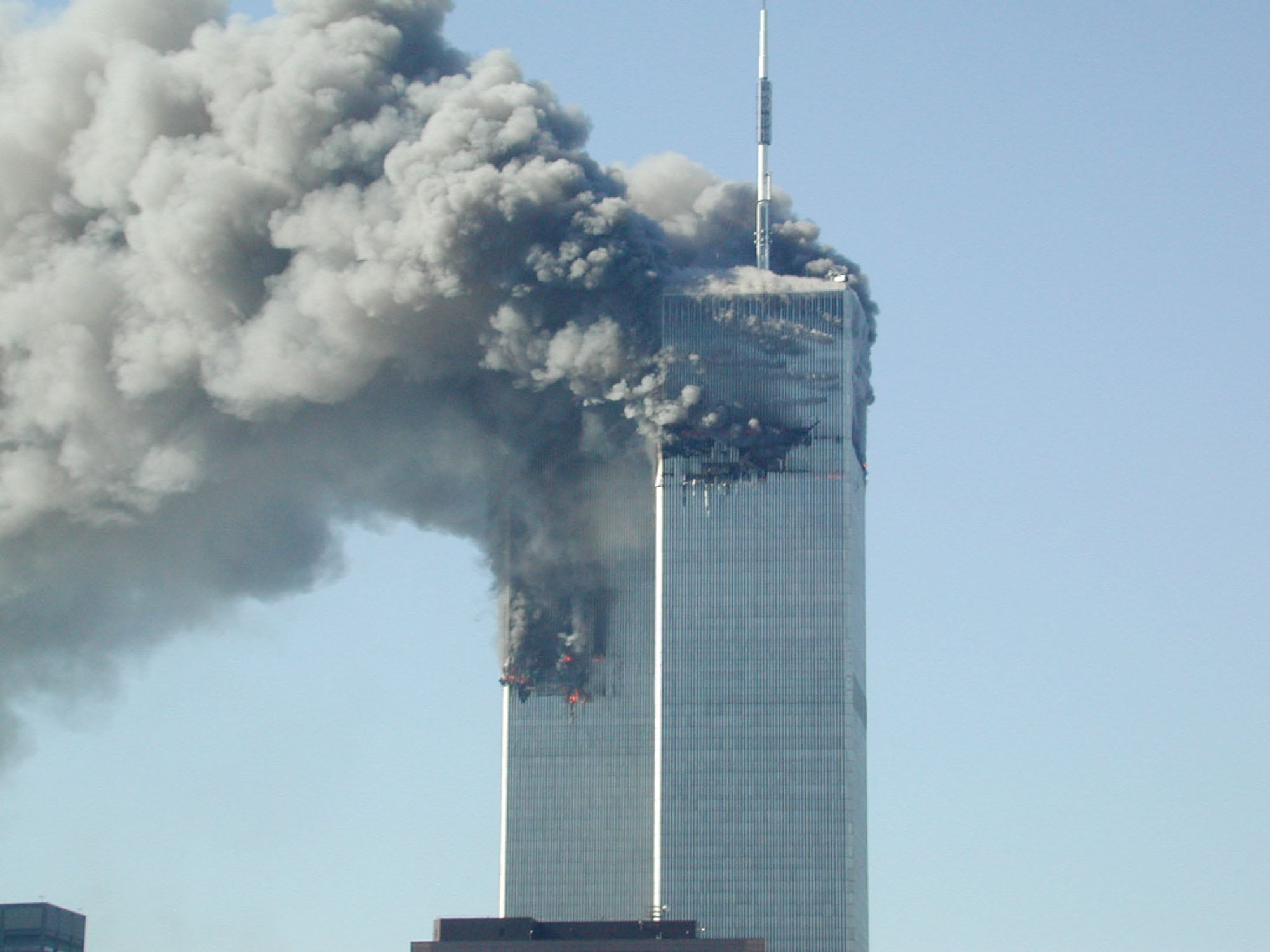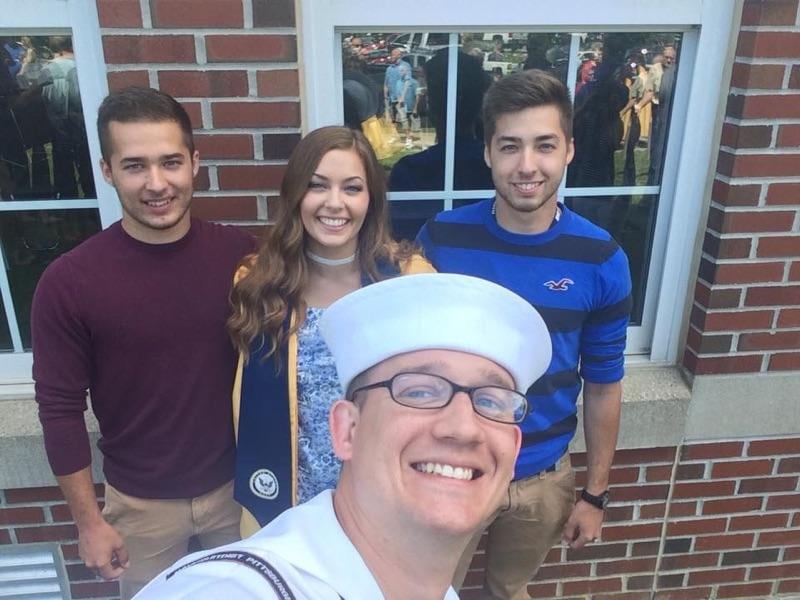This fall 18-year-old Cadi Herman will join the Navy. So will her 21-year-old twin brothers, Dominic and Maveric Herman.
Besides the unusual element of having all of the siblings from one family enlist together, there’s something else that sets them apart from the millennial-generation recruits who have signed up over the last decade: They have no memories of the Sept. 11, 2001, terrorist attacks on New York and the Pentagon.
Cadi Herman was only 2 when the towers fell. Her older brothers were 5. The attacks didn’t inspire them to serve, even though the country is still on a war footing.
Recruiters said what did attract the Hermans to military service — the opportunity for travel and the ability to pay for school — is far more often what convinces a new recruit to join these days than the memory of Sept. 11.
“The motivation to join has obviously changed a little bit since 9-11,” said Adam Wainwright, a Navy recruiter based in Pittsburgh. “For the most part, it’s not one of biggest reasons people join.”
Wainwright, who is also a mass communications specialist first class, connects to high school kids now by listening to them to learn what they seek in their careers and lives. He does this through information tables he can set up inside local high schools. After a student completes his or her junior year, Wainwright can sit down with them face-to-face for a more formal conversation.
“There’s patriotism still, and a lot of strong military ties,” Wainwright said. “But there’s also a variety of reasons, especially educational benefits. The kids are getting smarter, making sure they’re not indebted for the next 20 years [by student loans.]”
More people enlisted in the military in the 12 months following the Sept. 11 attacks than they have in any of the 16 years since. During fiscal year 2002, which started three weeks after the attacks, 181,510 enlisted in the active-duty ranks and 72,908 joined the enlisted reserves.
“Following 9/11 there was an increase in the percentage of youth who responded [to a DoD survey] that they would probably or definitely join the military,” said Beth Asch, a senior economist at the RAND Corporation who has studied military recruiting.

“There were some other indications, too,” she said. “It was much easier for services to reach their recruiting goals, and the quality of individuals joining had increased somewhat.”
By 2005 however, all components of the Army, the Air National Guard and the Navy Reserve had missed their recruiting goals, even though each component had reduced the number of enlistments it required, according to the Congressional Budget Office.
In fiscal year 2005, enlisted active duty accessions dropped to 152,160; and 45,859 joined the enlisted reserves.
“All the metrics suggest that the 9-11 impact was actually relatively temporary,” Asch said.
By 2014, just 138,902 enlisted in active duty, and 67,285 in the enlisted reserves.
Part of the drop was the military’s own effort to shrink end-strength starting in 2013. Part of it was the continued military operations overseas, repeat deployments and an increase in the number of combat deaths as U.S. forces battled an insurgency in Iraq and then surged against the Taliban in Afghanistan 2010.
By 2017, however, those ongoing operations didn’t have as much sway.
None of Cadi Herman’s friends had served; Dominic and Maveric had one friend in the National Guard who was planning to go active duty.
Instead, tradition and opportunity convinced them, said their mother, Anne Wilson.
“We’ve got a lot of family members on my side who’ve served,” and that military service was talked about as the kids grew up, she said.
Dominic and Maveric had gone to work for their father in construction immediately after high school. All three kids were varsity athletes at Pavilion High School, in East Bethany, New York, and had an adventurous side. When they did something, it was almost always together.
It was Cadi who first started to think about joining the military, as her own high school graduation approached. Many of the career opportunities in her upstate New York home town revolved around farming and construction; Cadi Herman wanted more.
“It was the opportunity to travel around a lot, have this experience,” Cadi Herman said of her motivation. She had originally thought she’d become a nurse, but then learned through spending time at a nearby clinic that that profession didn’t suit her.
“I wasn’t really sure what I wanted to go to school for,” she said. After that, and the idea of spending a lot of money without direction didn’t make sense.
Wilson reached out to their local recruiter, Shaun Negvesky, an aviation structural mechanic first class. He was from a nearby town and Wilson trusted him to shoot straight with her kids.
Ironically, it was 16 years ago that Negvesky left for Navy basic training himself — three days after the Sept. 11 attacks.
As a new recruit, Negvesky had been scheduled to fly to Illinois for basic training, but all the planes were grounded. He boarded a Greyhound bus to get there; some of the other recruits in his class got in their cars and drove all the way from Texas.
Negvesky had decided the military would be a good path for him before Sept. 11, the attacks just ”fueled the fire,” he said in a recent interview.
This year Negvesky has 22 recruits he is shipping to either basic training or their Navy ”A” schools. Of the 22 recruits, the oldest is 24, one of the few recruits who has a recollection of the attacks.
Negvesky makes a point of bringing up his own Sept. 11 story with each recruit. But of the 22, there’s probably only one or two who are viewing their enlistment with a more firebrand approach of ”I’m going to go serve my country,” Negvesky said.
The rest of the recruits are a lot like he was when he grew up in the same upstate New York town of East Betheny — they want the opportunities the Navy can provide and the ability to move away and see the world.
“I can relate to all those kids,” Negvesky said. ”I grew up on those same streets. I don‘t sugar coat anything.”
Besides the travel, Cadi Herman said she was attracted to the career training she’ll get in the Navy, which she hopes will help her figure out what she ultimately wants to pursue in school.
Cadi Herman talked it over with Negvesky. Then she came home and talked it over with Maveric ― and sold him on the idea of enlisting, too. Then they talked Dominic into it.
Each of the three went to the Military Entrance Processing Station on their own — but still got ship dates to their “A” School in Pensacola, Florida, within weeks of each other.
Cadi Herman will train to become a cryptologic technician. Maveric Herman “will do a little bit of everything” as an aircrewman. “I’ll fix the radar, be in the helicopters working with pilots,” he said.
Dominic Herman will train as an information systems technician and work on the fleet’s networks.
Wilson said even though there’s good opportunity in the Navy, the recent collisions of the destroyers Fitzgerald and John S. McCain have deeply reminded her of the risks. But she’s happy that at least in this first stage of training they’ll be together.
“I am quite nervous for their safety,” she said. “But they are exceptional young people and they will go far.”
Tara Copp is a Pentagon correspondent for the Associated Press. She was previously Pentagon bureau chief for Sightline Media Group.




